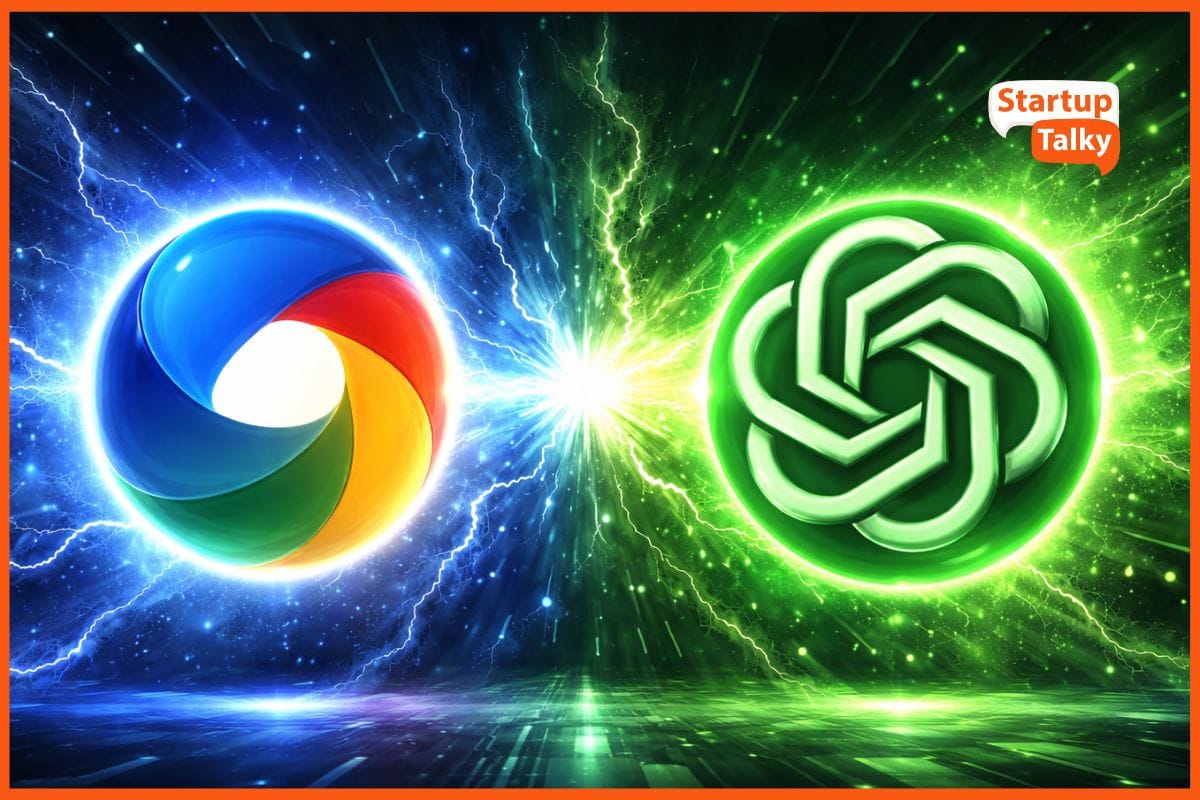Estee Lauder Vs. L’Oréal: The Better Cosmetics Brand
🔍Insights
The global cosmetics industry was valued at USD 380 billion in the year 2019. The growth of the industry is projected at a CAGR of 5.3% to reach a whopping USD 463.5 billion between 2021 and 2027. The year 2022 saw the global cosmetic industry grow by 15% with the North Asia region accounting for 32% of the global market. The vast cosmetic market encapsulates product categories like skincare, haircare, make-up, perfumes, toiletries, deodorants, and oral cosmetics. Within the product categories, skincare products have been leading with approximately 41% share in the global market, followed by haircare products at 22%. The third place has been occupied by make-up products with a 16% share in the global cosmetics market.
A large share of the production of cosmetics and beauty products is controlled by a few global market-leading companies that include L’Oréal, Unilever, Proctor & Gamble Co., The Estee Lauder Companies, Shiseido Company, and Beiersdorf. Between all these companies, it is the competition between the American company The Estee Lauder Companies Inc., and its larger European competitor L’Oréal S.A., that makes for an interesting comparison.
Estee Lauder Vs L’Oréal - Company Overview
Estee Lauder Vs L’Oréal - Which is a Better Brand?
Estee Lauder Vs L’Oréal - Marketing Strategies
Estee Lauder Vs L’Oréal - Product Categories
Estee Lauder Vs L’Oréal - Company Overview
The Estee Lauder Companies Inc.
Founded in the year 1946 by Estee Lauder and her husband Joseph, the company is headquartered in Midtown Manhattan, New York City. Beginning the company with only 4 products – cleansing oil, skin lotion, super rich all-purpose crème, and crème pack, Estee Lauder expanded the company just two years later with the establishment of the first department store with Saks. Expanding within the US for the next fifteen years, The Estee Lauder Companies Inc., expanded its first international footprint in London with the department store Harrods, followed by opening an office in Hongkong. This was the point from where the company grew and expanded internationally as well as continued adding more range of products to their repertoire like introducing Aramis (a line of fragrances and grooming products for men) in 1964 and opening Clinique, a dermatologist-guided, allergy-tested, fragrance-free cosmetic brand in 1968.

It was in the 1990s decade that the company witnessed explosive growth through brand acquisitions and licensing agreements as it transformed from a family-owned business to a publicly traded, family-controlled organization. It was during this decade that different brands joined hands with The Estee Lauder Companies like Tommy Hilfiger in 1993, Kiton in 1995, and Donna Karen in 1997. This continued into the next century as the company continued its path of growth and expansion through various acquisitions and licensing agreements. The post-pandemic global market scenario has touched the cosmetic giant as well, as it cut jobs and also announced the closing of 10 – 15% of its stores and focus on the growth of its digital operations. Estee Lauder Companies Inc. is a close number 2 to its European competitor L’Oréal.
L’Oréal S.A.
Headquartered in Clichy, Hauts-de-Seine with its registered office in Paris, L’Oréal S.A. was founded in the year 1909 by Eugene Paul Louis Schueller, a young French chemist who developed a hair dye formula called Oreale. Originally beginning its business operations with only hair color, the company’s guiding principle of research and innovation in the field of beauty, soon led it to expand its product repertoire which now includes hair color, hair styling, body and skin care, cleansers, make-up, and fragrance.
L’Oréal’s global expansion was aided by various acquisitions like The Body Shop in 2006, YSL Beaute in 2008, Magic Holdings, Shiseido brands Carita and Decleor, NYX Cosmetics, Brazilian hair care company Niely Cosmeticos Group, Carol’s Daughter in the year 2014, IT Cosmetics in 2016, ModiFace in 2018, vegan skincare brand Youth to the People in 2021 and Aesop in 2023. In the year 2018, L’Oréal announced a new beauty and fragrances partnership with Valentino.
Currently, L’Oréal markets more than 500 brands and owns 36 brands in the beauty business. In the year 2021, the company registered 497 patents and is currently the largest cosmetics company in the world.

Estee Lauder Vs L’Oréal - Which is a Better Brand?
Both companies are global leaders in the beauty industry. Both companies have brands that have a large and loyal following. It, then, is a matter of course that a comparison between the two brands is made. There are two parameters on which both these brands can be compared – Marketing Strategies and Product Categories with expansion and revenue.
Estee Lauder Vs L’Oréal - Marketing Strategies
Highlighting the 4 Ps (Product, Price, Place, and Promotion)
Products
Both Estee Lauder and L’Oréal have a vast and impressive product portfolio that covers the large realm of beauty. Where Estee Lauder began its business operations with only four products, gradually increasing its offerings, L’Oréal began with only hair dye and has grown to include many products. Estee Lauder’s primary product offerings revolve around the make-up market including concealers, mascara, lipstick, nail lacquer, accessories, blush, powder, etc. The brand also offers fragrances for men and women. L’Oréal’s primary product offerings include hair care products like dyes, conditioners, hair styling serums, hair sprays, and shampoos. Of course, the beauty brand also offers make-up products like mascara, eye and lip liner, foundation, primer, blush, powder, foundation, etc. Both brands also offer a plethora of skincare products as well. L’Oréal also has a kids’ line of cosmetic products that are available in different sizes and price ranges.

Price
Estee Lauder positions itself as a premium brand that offers high-quality products. Estee Lauder’s target audience is the higher income and higher middle-class income economic segment, with women who hold beauty at the forefront and would be agreeable to spending money to achieve great results for their skin. However, the brand also offers various incentives like gift coupons, online shopping discounts, and first-purchase discounts to encourage new customers and also bolster customer loyalty. L’Oréal also adopts the same premium positioning strategy with the same target consumer segment. The brand reels in new customers and retains customer loyalty through several discounts and sales of its products.
Place
This is a marketing strategy in which both these brands have slightly different approaches. Estee Lauder’s strategic network ensures the brand's global presence as it sells its products in more than 100 countries as well as in its online stores. However, the brand has a limited distribution channel that plays into its image as a luxury brand effectively. Shopping malls and up-market department stores are where the brand usually sells its products. On the other hand, L’Oréal utilizes multiple distribution and selling channels making its products available in perfumeries, supermarkets, beauty outlets, and even hair salons. L’Oréal products are also available in its online stores and, just like Estee Lauder, the brand is present in more than 100 countries.
Promotion
Both beauty brands follow a promotional strategy that agrees with their business values and results in growth and expansion. The overlap is that both brands extensively utilize social media with Estee Lauder using influencer marketing and L’Oréal designing specific campaigns. While L’Oréal works with several celebrities and models globally to connect with their customers, Estee Lauder uses influencer marketing through famous faces. Estee Lauder offers first-purchase discounts and also gift coupons upon meeting set criteria. It also uses direct mail, editorial coverage, and billboard ads and offers free samples during promotional campaigns. L’Oréal uses traditional methods that include, magazine advertisements, billboards, etc, and also offers free samples on purchase of other products as well as discounts on certain select products.
Estee Lauder Vs L’Oréal - Product Categories
There is a lot of overlap in the product offerings of both brands. Both brands saw an equal growth of 17 to 18% within their skincare segments. L’Oréal’s skincare revenue grew from USD 8.33 billion to USD 9.83 billion while Estee Lauder witnessed a growth from USD 4.77 billion to USD 5.59 billion between 2014 and 2018. This growth was primarily due to rising emerging market demand for skincare products. Within the makeup segment, L’Oréal grew from USD 6.16 billion to USD 8.48 billion witnessing a 38% growth while Estee Lauder was closely following with a growth of 34% going from USD 4.21 billion to USD 5.63 billion between 2014 and 2018. L’Oréal’s fragrance segment showed negligent growth going from USD 4.11 billion to USD 4.24 billion between 2014 and 2018. However, Estee Lauder witnessed a 28% growth in the same period going from USD 1.43 billion to 1.83 billion.
Conclusion
Even though L’Oréal is a larger corporation than Estee Lauder with a much more established global presence, Estee Lauder’s revenue growth has been exponential at 25% with the former registering only an 8% growth. Both these brands also extensively utilize e-commerce channels with almost 36% of the millennial population purchasing beauty products online. With technological advancements within the beauty industry, it will be interesting to watch how these two giants measure against each other in the coming years.
FAQs
Who are the founders of Estee Lauder?
Estee Lauder and her husband Joseph Lauder founded Estee Lauder in the year 1946.
Who founded L’Oréal?
L’Oréal S.A. was founded in the year 1909 by Eugene Paul Louis Schueller, a young French chemist who developed a hair dye formula called Oreale.
What are Estee Lauder's primary product offerings?
Estee Lauder’s primary product offerings revolve around the make-up market including concealers, mascara, lipstick, nail lacquer, accessories, blush, powder, etc.
What are L’Oréal’s primary product offerings?
L’Oréal’s primary product offerings include hair care products like dyes, conditioners, hair styling serums, hair sprays, and shampoos.
Must have tools for startups - Recommended by StartupTalky
- Convert Visitors into Leads- SeizeLead
- Website Builder SquareSpace
- Manage your business Smoothly Google Business Suite







